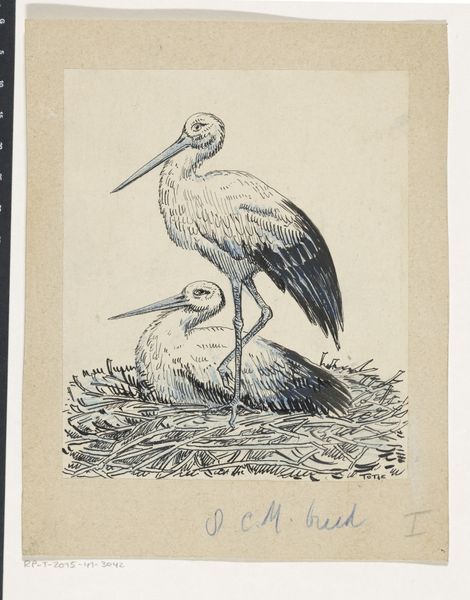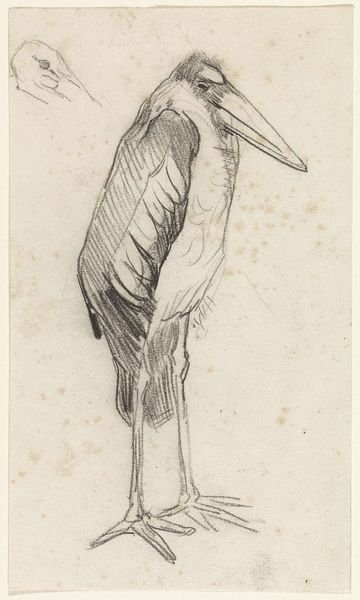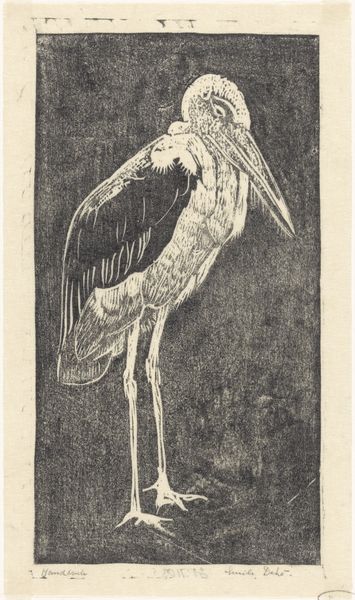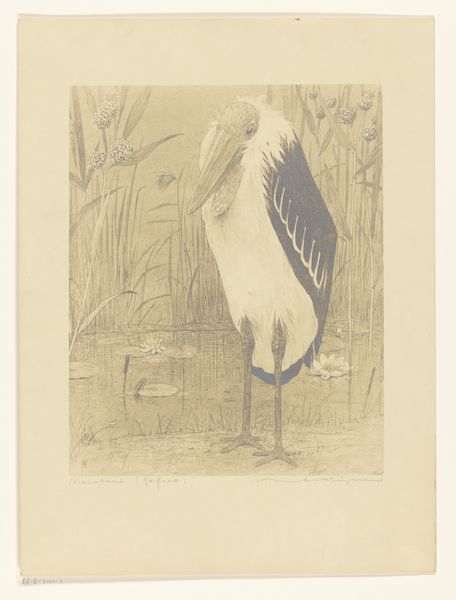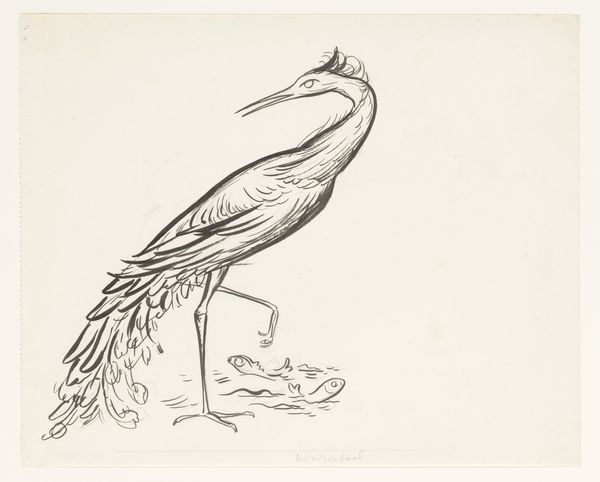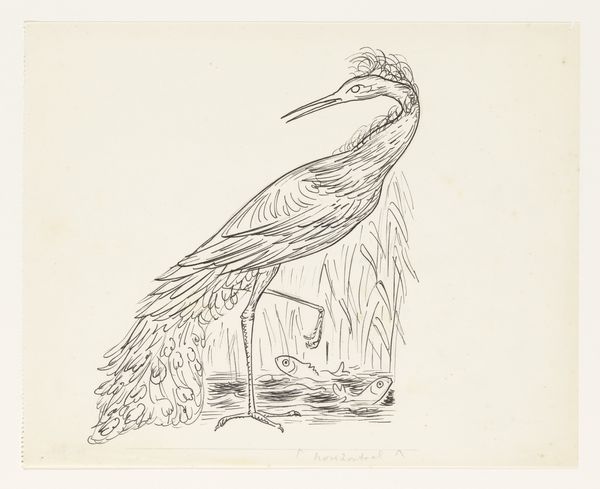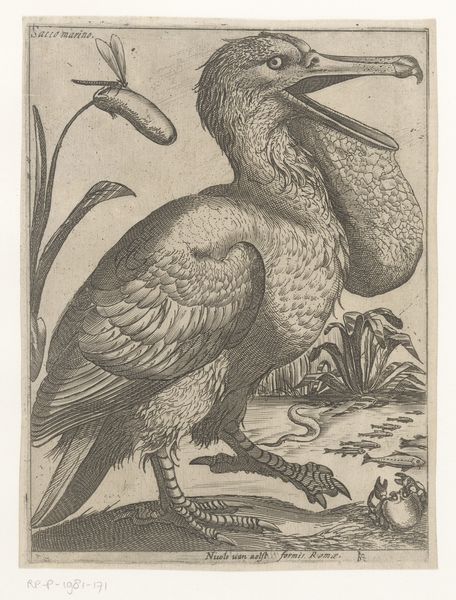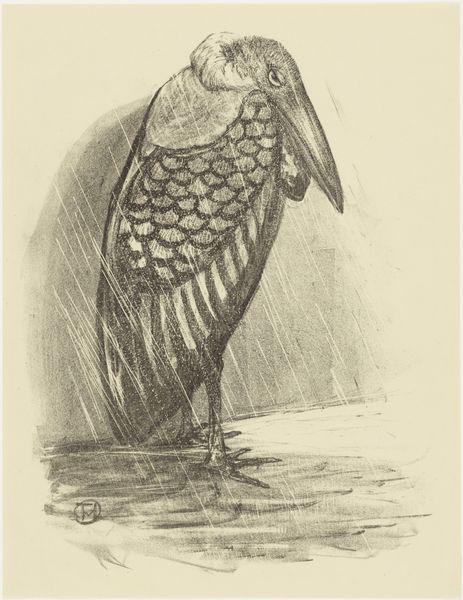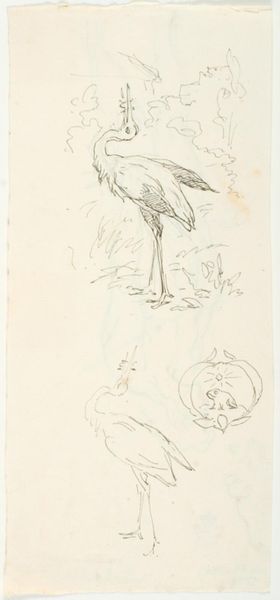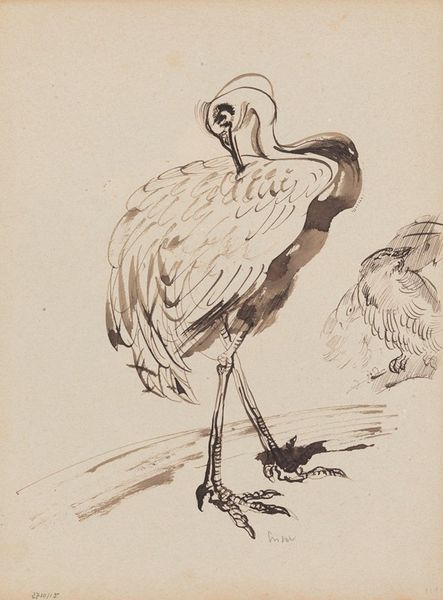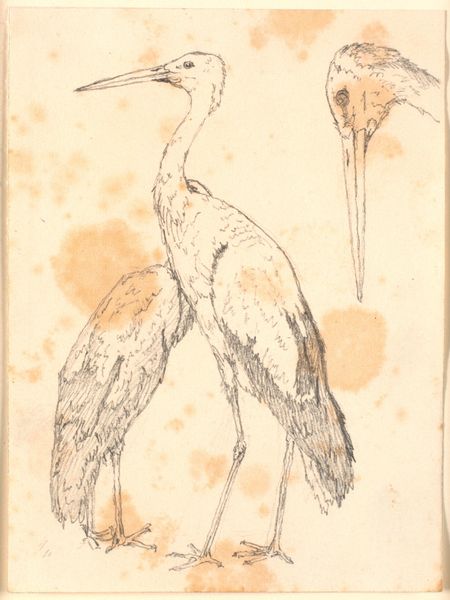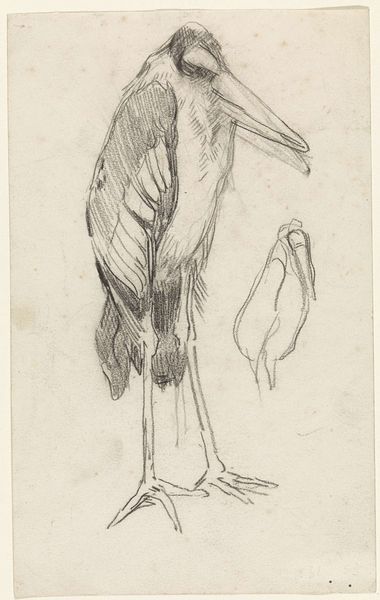
drawing, ink
#
drawing
#
organic
#
art-nouveau
#
figuration
#
ink
#
line
Copyright: Public Domain
Curator: This artwork is titled "Zeichnung zur Fibel_ Storch," or "Drawing for the Primer_ Stork," and was created by Hans Thoma around 1905. It's currently housed right here in the Städel Museum. Editor: My first thought? A rather mournful looking bird. There's something so stark and linear about the drawing that makes it seem almost burdened. Curator: That sadness you perceive likely arises from Thoma's simplified drawing technique. As an ink drawing, the stark lines certainly lend a somberness to it. Editor: Definitely, the way Thoma has used ink to create varied textures, especially for the feathers—you can practically feel them, while its slenderness makes it vulnerable and awkward. Do we know why Thoma would be making this piece for a "Primer?" Was he trying to create material for educating children? Curator: Exactly! It was part of a broader movement embracing new pedagogies emphasizing visual learning and artistic creation. This places art directly into the service of societal development. Also the art nouveau style, as evidenced by the curvilinear designs here, offered a softening approach, maybe he wanted something inviting for the children, too? Editor: It’s intriguing how a seemingly simple drawing reflects these socio-political and educational ideals. The starkness, combined with this practical pedagogical purpose, emphasizes art’s broader public role. But the limited distribution surely made these learning aids exclusive to wealthier communities? Curator: That's very insightful, understanding access is key. Think about how these drawings may have shaped perceptions of nature and visual art for those who could engage with them at that time. A simple sketch serving so many different cultural functions. Editor: True, examining such an object can be an interesting point from which we explore the intersections between art, learning, class, and social values at the beginning of the twentieth century. Curator: Indeed, offering us glimpses into a specific time and place through the lens of material culture.
Comments
No comments
Be the first to comment and join the conversation on the ultimate creative platform.
